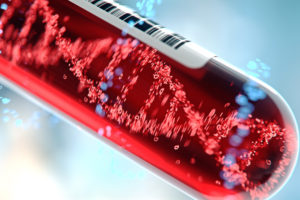What are the Causes of Mononucleosis?
Mononucleosis Overview
The most common cause of mononucleosis is the Epstein-Barr virus, but other viruses also can cause similar symptoms. In fact, mononucleosis, or mono, can lead to a range of symptoms, including severe fatigue, fever, and a sore throat. However, symptoms typically generally resolve within around 2–4 weeks.
Mono is a common disease in young adults and teenagers. It most commonly develops with exposure to the Epstein-Barr virus (EBV).
Although there are no medical treatments for mono, a person can take steps to manage pain and relieve other symptoms.

Symptoms of Mononucleosis
Mono symptoms usually develop 4–6 weeks after exposure to EBV.
The time between exposure and symptoms first appearing is known as the incubation period.
Symptoms of mononucleosis can include:
- A sore throat
- Severe fatigue
These symptoms may not develop at the same time. Some people may experience severe symptoms, while others may have milder symptoms.
Fatigue
Mono can cause extreme fatigue, which can continue for a number of weeks and can affect a person’s quality of life long after some other symptoms have resolved.
A 2019 study of 65 people found that participants had some of the criteria of chronic fatigue syndrome in 40% of cases 6 months after the initial infection.
More studies are necessary to assess the long-term effects of fatigue after EBV infection and mono.
Sore Throat
People with mono often experience a severe sore throat. It may be worse than other types of sore throat.
Before the sore throat starts, the tonsils may produce discharge. Lesions might also appear on the roof of the mouth, although this is uncommon.
Fever
Mononucleosis often causes a fever. This can reach as high as 104ºF (40ºC).
The 2019 study mentioned above suggested that a fever this high may last for 2 weeks in people with severe mono, but temperatures of 101°F (38.3°C) can persist for up to 5 weeks.
Swollen Glands
Some doctors refer to mono as glandular fever, as it typically causes swelling in the lymph nodes, or glands.
A person may experience swollen glands in the neck or armpits.
Organ Swelling
Although less common than other symptoms, mono can cause swelling in the spleen and liver. Up to half of all people with mono develop a swollen spleen, or splenomegaly.
Livers or spleens that swell due to mono may remain swollen after other symptoms, such as fatigue, have resolved.
A person with mono needs to avoid sports, as any potential spleen enlargement may result in rupturing.
Other symptoms
Following are other symptoms that mono may cause:
- Chills
- Eye symptoms, especially pain and swelling around the eye and pain behind the eye
- General feeling of being unwell
- Muscle aches
- Reduced appetite
- Rash
- Sweating
- Yellowing of the whites of the eyes and the skin, known as jaundice
How long do Mononucleosis Symptoms Last?
Mononucleosis symptoms resolve in 2–4 weeks for most people.
Different symptoms may resolve in different time frames:
- Sore throat: This usually lasts 3–5 days before slowly starting to feel better.
- Fever: A person’s body temperature may stay high for 10–14 days.
- Fatigue: This commonly lasts for several weeks but may continue for months after other symptoms get better.
- Swollen glands: These can last for a few months.
Some symptoms may last for at least 6 months in some people.
Causes of Mononucleosis
The most common cause of mononucleosis is the Epstein-Barr virus, but other viruses also can cause similar symptoms. This virus is spread through saliva, and you may catch it from kissing or from sharing food or drinks.
Although the symptoms of mononucleosis are uncomfortable, the infection resolves on its own without long-term effects. Most adults have been exposed to the Epstein-Barr virus and have built up antibodies. This means they’re immune and won’t get mononucleosis.
Complications of Mononucleosis
Complications of mononucleosis can sometimes be serious.
Enlargement of the Spleen
Mononucleosis may cause enlargement of the spleen. In extreme cases, your spleen may rupture, causing sharp, sudden pain in the left side of your upper abdomen. If such pain occurs, seek medical attention immediately — you may need surgery.
Enlarged Spleen
The spleen is a small organ usually about the size of your fist. But a number of conditions, including liver disease and some cancers, can cause your spleen to become enlarged.
Liver Problems
Issues with your liver also may occur:
- Hepatitis. You may experience mild liver inflammation (hepatitis).
- Jaundice. A yellowing of your skin and the whites of your eyes (jaundice) also occurs occasionally.
Less Common Complications
Mononucleosis can also result in less common complications, including:
- Anemia — a decrease in red blood cells and in hemoglobin, an iron-rich protein in red blood cells
- Thrombocytopenia — a low count of platelets, which are blood cells involved in clotting
- Heart problems — an inflammation of the heart muscle (myocarditis)
- Complications involving the nervous system — meningitis, encephalitis and Guillain-Barre syndrome
- Swollen tonsils — which can block breathing
The Epstein-Barr virus can cause much more serious illness in people who have impaired immune systems. Patients with weakened immune systems may include people with HIV AIDS or patients taking drugs to suppress immunity after an organ transplant.
Prevention of Mononucleosis
Mononucleosis is spread through saliva. If you’re infected, you can help prevent spreading the virus to others by not kissing them and by not sharing food, dishes, glasses and utensils until several days after your fever has improved — and even longer, if possible. And remember to wash your hands regularly to prevent spread of the virus.
The Epstein-Barr virus may persist in your saliva for months after the infection. No vaccine exists to prevent mononucleosis.
Diagnosis of Mononucleosis
Physical Exam
Your doctor may suspect mononucleosis based on your signs and symptoms, how long they’ve lasted, and a physical exam. He or she will look for signs such as swollen lymph nodes, tonsils, liver or spleen, and consider how these signs relate to the symptoms you describe.
Blood Tests
- Antibody tests. If there’s a need for additional confirmation, a monospot test may be done to check your blood for antibodies to the Epstein-Barr virus. This screening test gives results within a day. But it may not detect the infection during the first week of the illness. A different antibody test requires a longer result time, but can detect the disease even within the first week of symptoms.
- White blood cell count. Your doctor may use other blood tests to look for an elevated number of white blood cells (lymphocytes) or abnormal-looking lymphocytes. These blood tests won’t confirm mononucleosis, but they may suggest it as a possibility.
Treatment of Mononucleosis
There’s no specific therapy available to treat infectious mononucleosis. Antibiotics don’t work against viral infections such as mono. Treatment mainly involves taking care of yourself, such as getting enough rest, eating a healthy diet and drinking plenty of fluids. You may take over-the-counter pain relievers to treat a fever or sore throat.
Medications
- Treating secondary infections and other complications. A streptococcal (strep) infection sometimes goes along with the sore throat of mononucleosis. You may also develop a sinus infection or an infection of your tonsils (tonsillitis). If so, you may need treatment with antibiotics for these accompanying bacterial infections.
Severe narrowing of your airway may be treated with corticosteroids.
- Risk of rash with some medications. Amoxicillin and other antibiotics, including those made from penicillin, aren’t recommended for people with mononucleosis. In fact, some people with mononucleosis who take one of these drugs may develop a rash. The rash doesn’t necessarily mean that they’re allergic to the antibiotic, however. If needed, other antibiotics that are less likely to cause a rash are available to treat infections that may go along with mononucleosis.
Although there are no specific medical treatments for mono, a person can manage symptoms by:
- Drinking enough fluids to stay hydrated, with small frequent sips if swallowing is too painful
- Getting plenty of rest
- using pain relief medications, including acetaminophen and ibuprofen
It is best to avoid intense physical activity, such as sports or lifting heavy objects.

Biospecimens
Bay Biosciences is a global leader in providing researchers with high quality, clinical grade, fully characterized human tissue samples, bio-specimens, and human bio-fluid collections.
Human biospecimens are available including cancer (tumor) tissue, cancer serum, cancer plasma, cancer peripheral blood mononuclear cells (PBMC). and human tissue samples from most other therapeutic areas and diseases.
Bay Biosciences maintains and manages its own biorepository, the human tissue bank (biobank) consisting of thousands of diseased samples (specimens) and from normal healthy donors for controls, available in all formats and types.
In fact, our biobank procures and stores fully consented, de-identified and institutional review boards (IRB) approved human tissue samples, human biofluids such as serum samples, plasma samples from various diseases and matched controls.
Also, all our human tissue collections, human biospecimens and human biofluids are provided with detailed, samples associated patient’s clinical data.
In fact, this critical patient’s clinical data includes information relating to their past and current disease, treatment history, lifestyle choices, biomarkers, and genetic information.
Additionally, patient’s data associated with the human biospecimens is extremely valuable for researchers and is used to help identify new effective treatments (drug discovery & development) in oncology, and other therapeutic areas and diseases.
Bay Biosciences banks wide variety of human tissue samples and human biological samples, including fresh frozen human biospecimens cryogenically preserved at – 80°C.
For example fresh frozen tissue samples, tumor tissue samples, formalin-fixed paraffin-embedded (FFPE), tissue slides, with matching human bio-fluids, whole blood and blood-derived products such as human serum, human plasma and human PBMCs.
Bay Biosciences is a global leader in collecting and providing human tissue samples according to the specified requirements and customized, tailor-made collection protocols.
Please contact us anytime to discuss your special research projects and customized human tissue sample requirements.
Types of Biospecimens
Bay Biosciences provides human tissue samples (human specimens) and human biofluids from diseased and normal healthy donors which includes:
- Peripheral whole-blood
- Amniotic fluid
- Bronchoalveolar lavage fluid (BAL)
- Sputum
- Pleural effusion
- Cerebrospinal fluid (CSF)
- Serum (sera)
- Plasma
- Peripheral blood mononuclear cells (PBMC)
- Saliva
- Buffy coat
- Urine
- Stool samples
- Aqueous humor
- Vitreous humor
- Kidney stones (renal calculi)
- Other bodily fluids from most diseases including cancer.
Moreover, we can also procure most human biospecimens and human biofluids, special collections and requests for human samples that are difficult to find. All our human tissue samples and human biofluids are procured through IRB-approved clinical protocols and procedures.
In addition to the standard processing protocols, Bay Biosciences can also provide human biofluids such as human plasma, human serum, and human PBMCs bio-fluid samples using custom processing protocols; you buy donor-specific collections in higher volumes and specified sample aliquots from us.
Bay Biosciences also provides human biospecimens from normal healthy donors; volunteers, for controls and clinical research, Contact us Now.
- 日本のお客様は、ベイバイオサイエンスジャパンBay Biosciences Japanまたはhttp://baybiosciences-jp.com/contact/までご連絡ください。


